Anyhow, I hope this gives you some good ideas.

In my web travels in search of gluten-free recipes, I've discovered something way better than sucky rice flour to bake with. I've discovered something called Almond flour, specifically the blanched variety. Yes, flour made from almonds, I guess... high in protien and low in sugar, and people rave that it's moist, delicious and far superior in terms of taste, nutrition and ease of use. The down side is that it's $15 per pound at the grocery store, but apparently one should be able to get it online for approximately half that.There's a fairly inexpensive health food store here called Trader Joe's that I might visit.(Oh, and I've been warned against getting Bob's Red Mill brand, I've tried their gluten-free pancake mix and it's really gross, so I'm inclined to stay away from the almond flour too.) If all else fails, I can use my blender to make it myself out of actual almonds.

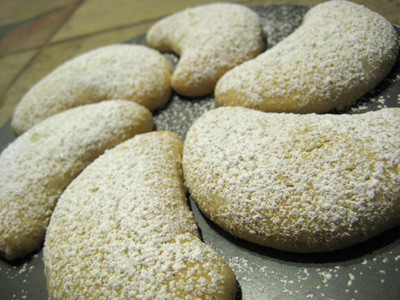
Here is what lowcarbdiets.about.com had to say about almond flour/meal:
Almond flour is good in "quick-bread" type recipes, like muffins, nut breads, and pancakes (see recipes below). It's not good for foods such as bread that require a real dough (you can't knead it). Usually, more eggs are required when baking with almond meal to provide more structure. Almond meal can also be used in breading fish, but care must be taken not to burn it.


There's also something called Coconut Flour, which is also gluten-free. It's got dietary fiber (58%), protien, lauric acid (antimicrobial thyroid stimulant), contains no trans fat, boosts yourimmune system and metabolism too.
I found an article on a forum about celiac disease which said the following:
Food contains two types of carbohydrate: digestible and non-digestible. Digestible carbohydrate consists of starch and sugar and provides calories. Non-digestible carbohydrate is the fiber and provides NO calories. Coconut meat is composed primarily of non-digestible fiber with a beneficial amount of water and smart oil.
Dietary fiber acts like a broom, sweeping your intestinal contents along your digestive tract aiding in elimination, regularity and helping to promote digestive health. Since you cannot digest the dietary fiber in coconut flour, you derive no calories from it.
Studies have shown that an additional 14 grams of fiber daily (the amount in about ¼ cup of coconut flour) is associated with a 10% decrease in calorie intake and a resulting loss in body weight. The health benefits of dietary fiber include:
Promotes heart health and supports your immune system
Facilitates better digestion and promotes digestive comfort
Promotes absorption of vitamins and minerals
Assists in detoxifying your body
Helps promote cholesterol health
According to the U.S. Department of Agriculture, only 24% of the carbohydrate in oat bran is composed of fiber. Soybeans contain only 29% fiber, and wheat bran is 42% fiber. When you add the abundant health-promoting qualities of coconut oil to those listed above, it is my opinion that you'd be hard pressed to find a more nutritional cooking source than coconut flour.
The bad news is that large portions of commercially prepared gluten-free foods are made using soy flour. I cannot emphasize enough that soy is not the health food that you think it is. If you are still using soy, I urge you to consider how some studies are linking soy to serious health conditions including:
Increased risk of breast cancer in women, brain damage in both men and women, and abnormalities in infants
Contributions to thyroid especially in women
Weakening of your immune system
Severe, potentially fatal food allergies
It appears that the tide is beginning to turn against the soy craze and many people are now wisely looking for healthier alternatives.
Source: http:/ / www.celiac.com/ gluten-free/ index.php?showtopic=27587
I would also like to add that soy raises estrogen, the way that zinc raises testosterone... so going by that logic, too much zinc is no good for you either.
My old man happens to love coconut, but I'm not sure if everyone else that will be at the dinner would like it, I have to ask. So far all we got from Tammy's parents when we invited them is a "we'll see". I'msorry but I'm not cooking for 6 people on the only day I can spend with my family andblow all this money for food on a maybe. It's free grub, it means a lot to both Tams and myself, and it doesn't cost them a fucking dime other than the gas to come over my house, so what's the big deal? Commit, okay? We're not asking for your rear molars here.


I've never even heard of this. Apparently,it's type of flour milled from seeds from the amaranth plant.It provides a very mild tangy, somewhat peppery or nutty flavor, which may be quite noticeable if the flour is not combined with another flour when preparing baked foods. It can't be used on a 1:1 ratio to regular flour because then your stuff will come out tasteless and hard, so you have to mix it with other types of flours and mess around with the amounts until you get it right. This sounds like a real pain in the ass. Grantd, it's got protien, iron, calcium and zinc, but it also has traces of gluten in it. To me, coupled with the fact that it's expensive as hell and near impossible to find outside of a specialty store, that makes it hardly worth the trouble.
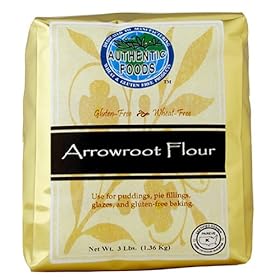


I think a lot of us have heard of Arrowroot. They make buscits out of it that we feed to babies. It's a cornstarch-like substance you can use to thicken gravy with. Up until today, that's all I knew about the stuff. Well apparently,it's extracted from the root of the marantha arundinacea which is indegenous to the West Indies. The aborigines from the West Indes, called Arawaks, used this powder to draw out toxins from people who were wounded by poison arrows. Thus, the name arrowroot came to be.It's easily digested and is used in diets requiring bland, low-salt, and low-protein foods, hence why we give it to infants. It's an excellent thickening agent, using 1 teaspoon for every Tablespoon Flour or Corn Starch, and also prevents ice crystals from forming in home made ice cream. It's got no fat, choresterol or sugars, and has a little bit of protien and calcium. The down side is that it's hella fucking expensive and I've never seen it anywhere.

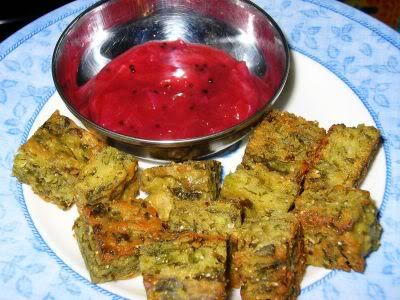
Holy Fallafel, Batman... flour out of garbanzo beans?? What a novel idea. Also called Gram flour, chana dal, cicior besan. This is a staple ingredient in indian and Bangladeshi cooking, I used to see it allthe time when I lived in a primarily middle eastern neighborhood. Not only that, but they used to mix this with either water or yogurt and make a facial exfoliant. It's also used as an egg-replacer in vegan cooking. It's high in carbs and protien, and contains no gluten. It's mainly used to make fried foods and to coat things like fries, potatoes, onions, fish, chicken, etc. Not great for baking.


This is how I'm used to seeing Corn Flour, in every asian supermarket I've ever been in. It's milled from dried kernels of yellow corn; but unlike cornmeal, is milled to a much finer consistency. It's used to make cornbread, muffins, pancakes, polenta, and tortillas. Corn flour is very useful for gluten-free quick breads. But because corn flour contains no gluten, it must be blended with wheat flour when preparing yeasted breads. The basic difference between corn flour and corn starch is that corn starch ismade from the white heart of the corn kernel, leaving it virtually tasteless and just good for thickening stews, sauces and glazes. It actually has double the thickening power as regular flour and way less fat. It's come to my understanding that chefs in the UK call corn starch cornflour, but in the US, they are two different things.
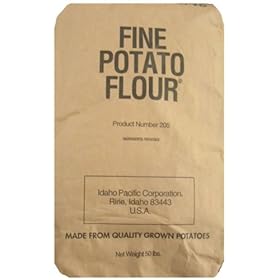

This is a staple in Jewish cooking, especially in thepassover days whenthe religious of the faitharen't allowed to eat any grains. Me, I was never that religious so it didn't matter, but I had to learn how to cook authentic when I got into catering. I even had to use my client's own kitchens because the typical Hasedic home has two ovens, sinks andfridges, all to comply with their strict laws of consumption. I like using this for kugels, dumplings, mixing it with curry, coating chicken and veggies then deep frying them, latkas, and thickening gravies. Although, you shouldn't let it boil once it's in because after a while it gives the dish a really strange aftertaste. If you want you can even bake with it; this flour can be mixed with other flours, though it kind of makes the dough really dense which could be a good thing depending on what you're making.
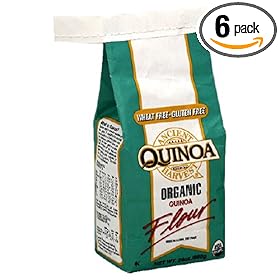


Pronounced "Keen Wa", one of the south american "heritage grains". I used to get cereal and pasta made out of this stuff. It's expensive but good, though not easy to find. The Incans reguarded this plant as sacred; they called it the mother of all plants. It's loaded with amino-acids, making it a complete protien source. It'shigh in Phosphorus, Magnesium, Iron and dietary Fiber, it's easy to digest and completely gluten-free. Because of this, quinoa is being considered a possible crop in NASA's Controlled Ecological Life Support System for long-duration manned spaceflights. How awesome is that?? Although it's higher in fat, but that's good because it'll make your baking moister than with regular flour.
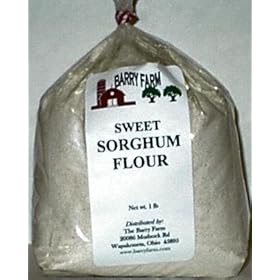

Nutritionally, sorghum flour is similar to corn flour, but it has a higher concentration of protein. In India, sorghum flour is often used for chapatis, which is a popular unleavened flatbread. It's mainly cultivated in Africa where it is a staple food source. According to newdiets.com, there are certain tricks to cooking with this type of flour.
- Add 1/2 to 1 Tablespoon of corn starch to every cup of sorghum flour to improve smoothness and moisture retention.
- Use xanthan gum as a binder and for moisture retention. Add 1/2 teaspoon of xanthan gum per cup of sorghum flour for cookies and cakes; or 1 teaspoon per cup of flour for breads.
- Add a little extra oil or shortening if you feel your recipes are too dry.
- Add an extra egg or egg white for improved smoothness and crumb structure.
- Add a little extra baking powder and/or soda to boost rising properties.
- Mix recipes longer.


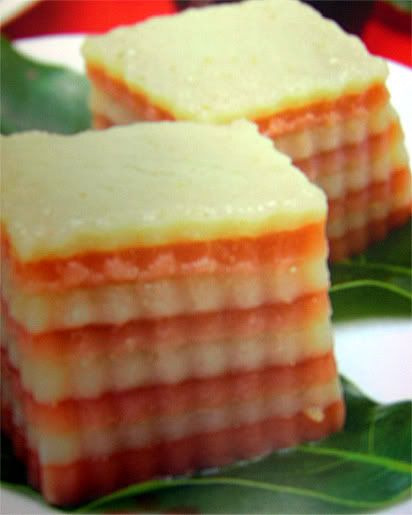
Tapioca Flour is also known as Tapioca Starch. The flour, made form cassava root, is primarily used to thicken sauces or add chewiness and lighten baked goods.
There is no way you can completely eliminate the use of other flours becauseTapioca Flour is not designed for this purpose. You will still need to use bread or riceflour. The main health benefitto thisis the fact thatit's gluten free. This stuff is also sold in the form of tapioca pearls which are popular in asian cooking.

Teff, also called lovegrass or bunchgrass,is atype of flour milled from teff grain. The name, "teff" is derived from the Amharic "teffa" which translates as lost. Due to its tiny size, teff can easily be lost if dropped. It is simple to prepare and similar to millet or quinoa in cooking. The flour is high in calcium, iron, magnesium, zinc, and thiamin and it is a good source of fiber. The iron from teff is easily absorbed by the body. It is very high in fiber and is thought to benefit people with diabetes as it helps control blood sugar levels. In Ethiopia, teff flour is a staple food product where it is most often used for a thin, very sour flatbread called injera. There are a few different varieties of teff that vary in color from light to dark. White teff has a chestnut-like flavor while darker varieties are more earthy in flavor with a slight hazelnut taste. Historically, white teff has been the most popular (and least widely available) variety. Perhaps due to its relative scarcity, historically white teff was regarded as a status symbol. More common is red teff. Red teff is higher in iron and has been rising in popularity in recent years. It can be used as a substitute in most baking for all or part of the wheat flour, although it wouldn't do so well for stuff like breads that rely on gluten for structure. It can be used in baking, coating, frying, thickening and they even make a home made alcohol out of it.
_______

Well, I hope this helped everyone who either can't have gluten or needs to cook for someone who can't have it... or even if you choose to give it up for a healthier lifestyle. At least you know there's tons of alternatives out there. Happy Baking!
